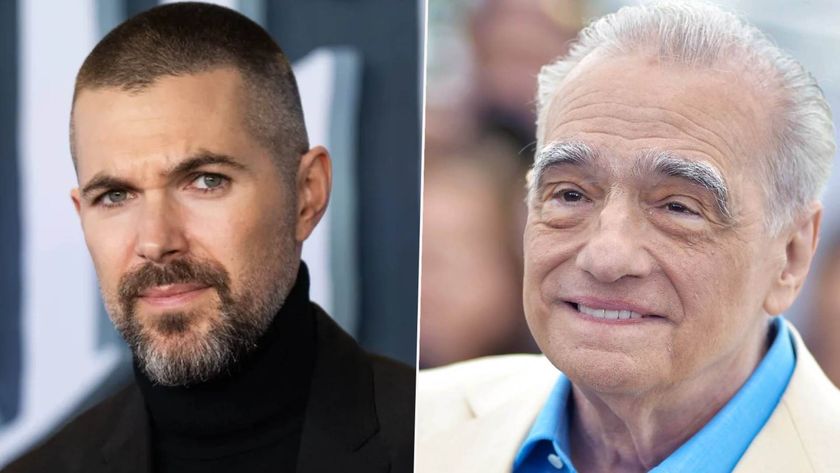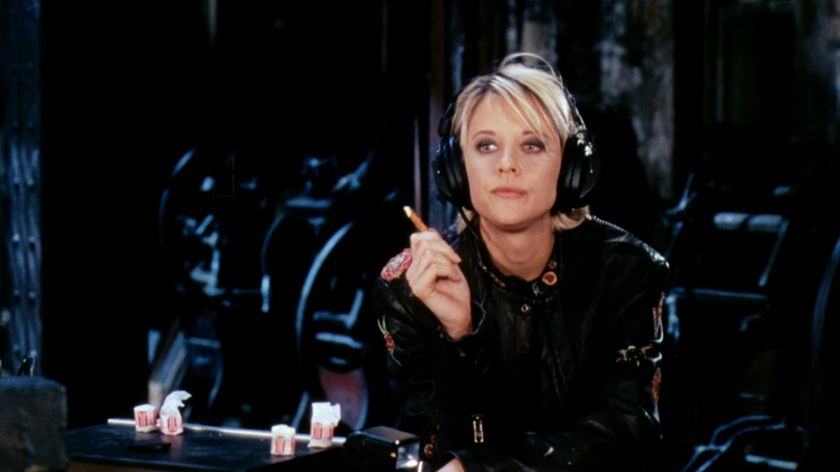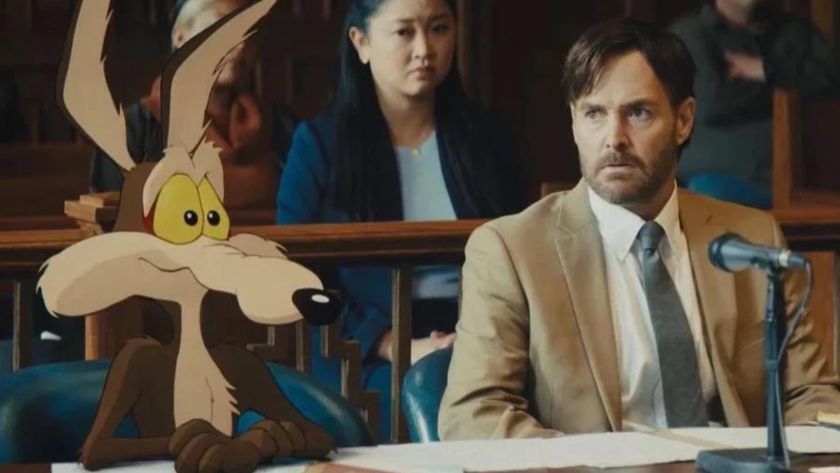Guillermo Del Toro On Making The Hobbit
The cult director exclusively updates us...
Eighteen months ago, Guillermo del Toro had a 10-year-plan. His life was mapped out, and it had nothing to do with JRR Tolkien’s lovingly rendered cartography of Middle-earth.
“I was calmly laying out the next decade of my life when The Hobbit appeared,” he laughs. “I was preparing all these things and all of a sudden The Hobbit shows up and takes over my life.”
Make no mistake: The Hobbit is his precious. Del Toro knows more than anyone that this diptych could – should – define his career.
And so the director has been busy building a world that not only honours JRR Tolkien’s book and Peter Jackson’s Lord Of The Rings trilogy but will emerge assuredly, triumphantly, his own.
Our very own cuddly character, Jamie Graham, snuggled up to Del Toro at his Wellington base of operations, and talked exclusively about the biggest films of next decade.
The Hobbit has taken much longer to design than your other movies…
It took almost a year. Which for me is very, very long because normally I take about a third of that time to design movies like Hellboy. And if you actually take into account we have three or four times the number of artists… [chuckles].
Sign up for the Total Film Newsletter
Bringing all the latest movie news, features, and reviews to your inbox
We produced hundreds, literally hundreds, of drawings; dozens and dozens of maquettes; dozens of material tests. It’s epic. And we are still going to be designing into production…
Next: Scripting the film [page-break]
How did it work with the writing of the script? Presumably you’ve had as much input as Peter Jackson, Fran Walsh and Philippa Boyens?
Many, many months ago we sat down to discuss the structure with 3in by 5in cards and we laid out the two movies.
We were meeting on a daily basis at 9am and we would go at it for hours, into the afternoon. Then in the afternoon I would go to check on design.
Then at one point we split into two teams: I did one pass at things and they did a pass at things; it’s pretty much the way I’m used to co-writing.
But I must say what was great and what made a big difference was the amount of great ideas that I felt were generated in a day – it was staggering.
We could have written three or four versions of The Hobbit [laughs].
You mentioned the structure. Will the book make up the first movie, with the second movie plucked from the appendices and maybe even your imagination? Or will parts of the book be saved for the second movie?
We are respecting the structure established by Professor Tolkien because the order of the adventures in The Hobbit is well known to generations and generations of kids. You don’t want to be moving stuff like that.
But we will be integrating Gandalf’s comings and goings because he does disappear in the book quite often.
So, as opposed to the book, we see where he goes and what happens to him
Next: Working with Jackson [page-break]
You and Peter are both visionary filmmakers who will fight for those visions. What happens when you clash?
So far we haven’t come to such a crossroads. We argue and we win at different stages. But I think Peter has been, so far, the perfect producer.
Two filmmakers have produced me in my life, both named Peter. One was Pedro Almodóvar and one is Peter Jackson.
Both times my experience has been that they are perfect producers because they understand the producer is not a producer/director.
A producer is a producer. If there’s an emergency, if everything goes wrong, then the producer can – and should – have a strong opinion.
But while everything is going well, on time, on budget and is creatively solid, there’s no need for that.
Presumably working with Peter is not that much different to working with Mike Mignola on the Hellboy movies?
You nailed it. I’d say Mike is as opinionated as if he was another director because essentially he directs on the page. And Mignola, like Pedro and Peter, knows the process – they all know that at some point you’re going to be alone with the beast [laughs].
You’re going to be the guy and you can only trust your own instincts.
You’re not going to be making a phone call from a remote location to ask a question; you’re going to have to make a decision yourself.
Next: From LA to Wellington [page-break]
So how arduous has it been commuting between LA and Wellington? You’re now in New Zealand full-time, yes?
Yes. I go to LA very seldom now. It is, however, an incredibly easy commute for me. I’m used to it. I’m used to London-LA and in the same way I’m used to Wellington-LA. I blob out on the plane [laughs] and I have 13 hours all to myself, so it’s a privilege.
I write, or prepare emails, or read, so it’s a really great working day.
And the great advantage between LA and Wellington is that you are essentially in your time zone. You lose a day but you go to sleep in your night in LA and you wake up the next morning in Wellington.
Do you find time to sneak in the odd movie on the plane?
I do! But I try to watch television mostly because it doesn’t need you to have a big screen!
Next: Creature Design [page-break]
You love creating your creatures and obviously The Hobbit offers some great opportunities. There’s the dragon Smaug, the spiders of Mirkwood, the Wargs, Beorn the bear-man…
The way I phrased it to Weta, I said we would keep the DNA in the same gene pool as the Rings trilogy, but that we would generate a different type of character. For example, in the trilogy most of the creatures are brutish or inarticulate.
In The Hobbit, the creatures speak: Smaug has beautiful lines of dialogue; the Great Goblin has beautiful lines of dialogue; many creatures do. So we had to design them with a different approach because you are not just designing things that are scary.
I also wanted some of the monsters in The Hobbit to be majestic.
I wanted the Wargs to have a certain beauty so that you don't have a massively clear definition: what is beautiful is good and what is ugly is not. Some of the monsters are absolutely gorgeous.
Smaug won’t be like the dragons in Reign Of Fire, say. Was it a big challenge to communicate his character?
I think one of the designs I’m the proudest of is Smaug. Obviously he took the longest.
It’s actually still active: we’re finishing his colour palette and a little bit of the texture. But the bulk of the design took about a year, solid. It’s because of the unique features of the dragon.
Early in production I came up with a very strong idea that would separate Smaug from every other dragon ever made. The problem was implementing that idea. But I think we’ve nailed it.
Next: Spiders [page-break]
What was the idea?
I cannot tell you what it was because it would be a massive spoiler! But I’m 100 per cent happy with Smaug. If there is such as thing as 110 per cent, then I’m there!
What about the spiders? How faithful are they to Shelob from Return Of The King?
Well, they are the progeny of Shelob, but Shelob was quite a promiscuous girl [laughs]. She mated with many partners. And insects and spiders are incredibly adaptable creatures. There will be spiders… [Laughs]
That sounds like a Paul Thomas Anderson sequel: There Will Be Spiders! But they are visually quite striking and in a different way to Shelob.
I wish I could tell you more but I would be spoiling it again. They are very different. They are more creatures of the shadow, more creatures of the deep forest. They are not earth nesting. They are nesting in the canopies so physically they have adapted to that environment.
Next: Scary movie? [page-break]
Will the sequences involving Smaug and the spiders be genuinely scary?
I think so. I hope so. At least that’s the way we’re approaching it. Every good children’s movie, be it early Miyazaki or Disney, always has a thrilling scene or two. When I read The Hobbit as a kid… Well, you have the moments like when Beorn has the heads of goblins on spikes outside his house [laughs].
Tolkien made no bones about that. There is no way to have a dragon attack a town that’s not scary. It’s the same for the spiders: there is no way of making giant spiders cocooning people so it would be gentle!
Have you been studying real spiders? There are some big ones in New Zealand!
We have been. We have a couple of the guys in the design team who are obsessed with spiders.
They actually do their own little documentaries and features and they go out and capture spiders and they shoot their mouthparts and this and that with macro-lenses.
The main problem with the spider designs is how do you translate the weight into a design so nimble or so long-legged, because a spider has long legs. With Shelob, she was quite low to the ground so she moved like a tank. Our spiders have to feel massive but be very nimble.
Next: Epic scale [page-break]
Are you OK with the real spiders?
No. I adore insects, and I’m completely fascinated by spiders… But I am completely and absolutely horrified by them, too [laughs].
It’s something that Peter and I share!
How about the scale of The Hobbit? You’ve done big action sequences in Mimic, the Hellboy movies and Blade II, but you’ve never tackled anything like the climactic Battle of Five Armies…
No – and I think that I’m really quite eager to go and do that. But at the same time there were so many battles in the trilogy. So one of the first things is how do we make the battles or the action in The Hobbit feel different from that?
Because it was fresh when the trilogy came out, to see those enormous valleys or fortresses being invaded by warriors.
But then after the trilogy you had Troy, Narnia, everything. It has become quite common seeing two massive CG armies attacking each other.
So we came up with a good solution, I think. It will make the battles stand out.
Next: Respect the rings [page-break]
Is it going to be more intimate?
I wish I could spoil it! All I can say is that we have an incredibly good team of people who know we are not making another Rings. We are not trying to make a quadrilogy, or a pentilogy. We’re tying to make two films that flow with those but that stand on their own completely.
We want to avoid stuff that is not part of the DNA, that is not part of the lexicon, but we also don’t want people to feel “We’ve seen this”.
Except where that familiarity is comforting, like Hobbiton or Rivendell – then you want to feel like you’re coming back home to a movie that you love and cherish.
Will you be using the same palette as the trilogy, dark and fertile?
I think The Hobbit is a bit more colourful. And a bit more operatic. And whimsical. One of the things the book marks very strongly is the seasons, so we’re using that as the basis of our thought.
Next: Del Toro magic [page-break]
Presumably it will also be a bit more magical? Have a stronger fairytale vibe?
It is in many ways just what you enjoy in the book. You enjoy an almost chamber piece, like when the stone trolls talk about cooking the dwarves.
It’s such a small piece but at the same time it’s magical and it’s almost a comedy, that you have these enormous creatures talking about cooking these dwarves!
It wouldn’t be a Guillermo del Toro movie unless it possessed a poetic quality, surely?
There is a lot of magic in the film. Peter has the eye of a strong historian, in the sense that the trilogy is incredibly accurate to a world that was created. He’s like an archaeologist who’s digging something that existed. I think that The Hobbit has a little bit more poetic licence.
It has… How can I say it? It has a little bit more flamboyance.
The Hobbit begins shooting in late spring 2010 and will open in 2011.
Like This? Then try...
Sign up for our free weekly newsletter here .
Follow us on Twitter here .
Jamie Graham is the Editor-at-Large of Total Film magazine. You'll likely find them around these parts reviewing the biggest films on the planet and speaking to some of the biggest stars in the business – that's just what Jamie does. Jamie has also written for outlets like SFX and the Sunday Times Culture, and appeared on podcasts exploring the wondrous worlds of occult and horror.
Most Popular









